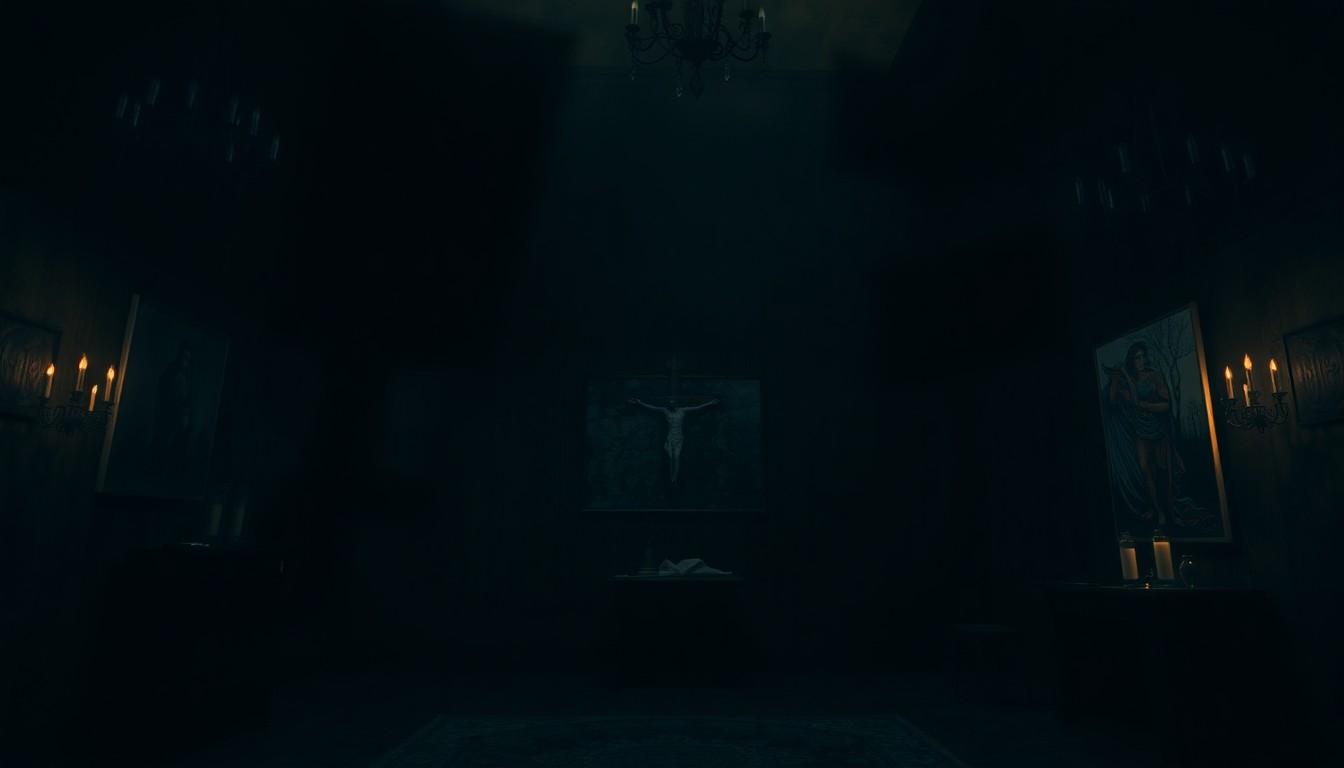In a world where films often toe the line of conformity, heretic cinema boldly breaks the mold. These films challenge norms, provoke thought, and sometimes leave audiences scratching their heads in bewilderment. From surreal narratives to unconventional storytelling techniques, heretic films invite viewers on a wild ride that defies traditional expectations.
But what makes these films so captivating? It’s not just about pushing boundaries; it’s about sparking conversations and igniting debates. Whether it’s a quirky indie flick or an avant-garde masterpiece, heretic cinema offers a refreshing perspective that keeps audiences coming back for more. Dive into the realm of heretic film analysis, where the bizarre becomes brilliant, and every frame is a canvas for interpretation. Get ready to explore the unconventional and discover why these films deserve a spot in the spotlight.
Heretic Film Analysis
Heretic film analysis examines films that diverge from traditional cinematic expectations. Such analysis focuses on the themes, aesthetics, and narrative structures that challenge viewers. These films often explore controversial subjects, prompting deeper reflections on societal norms and personal beliefs. Unique storytelling techniques create engaging viewing experiences, making heretic films significant in contemporary cinema.
Active discussions arise from analyzing character development and plot twists present in heretic films. Insightful critiques reveal how these elements contribute to the film’s overall impact. Critical theory applies here, as various lenses—like feminist or post-colonial—offer diverse interpretations. The analysis often involves comparing heretic films to mainstream works, highlighting differences in storytelling approaches.
Moreover, specific examples include works like “Eraserhead” and “The Holy Mountain.” Each film showcases unconventional visuals and narratives that defy typical genre expectations. These representative films leave audiences questioning reality and morality. Consequently, the analysis provides valuable insights that enrich the understanding of film as an art form.
Overall, heretic film analysis not only enhances appreciation for these works but also encourages a broader discourse around cinema. Engaging with the themes and techniques of heretic films leads to a greater comprehension of their societal implications. Hence, this analytical approach invites scholars and enthusiasts alike to delve into the intricacies of heretic cinema.
Key Themes in Heretic Films

Heretic films feature intense exploration of themes that challenge conventional norms. They often bring to light complex symbolisms and moral dilemmas.
Religious Symbolism
Religious symbolism frequently appears in heretic films, serving as a vehicle for deeper meaning. This symbolism can evoke a range of emotions, from reverence to rejection. For instance, “The Holy Mountain” utilizes Christ-like figures to confront religious ideologies while questioning the nature of divinity. These films employ stark visuals and metaphors, presenting a fusion of sacred and profane elements. Through this lens, religious frameworks become platforms for critique, pushing audiences to reconsider their beliefs and cultural narratives. The layer of symbolism found in scenes invites viewers to engage with spiritual themes beyond surface interpretations.
Moral Dilemmas
Moral dilemmas play a pivotal role in shaping narratives within heretic cinema. These dilemmas force characters into situations that test their ethics and convictions. In “Eraserhead,” existential questions arise as characters grapple with the implications of their choices, prompting audience reflection. The engagement with guilt, sacrifice, and redemption confronts viewers’ assumptions about right and wrong. Such complex situations encourage dialogue about societal values and personal beliefs. By presenting moral quandaries, heretic films foster a critical examination of how individuals navigate their realities, often leading to profound revelations and discussions.
Notable Heretic Films
Heretic films often challenge viewers with their distinct narratives and visual aesthetics. The following examples represent significant contributions to the genre, offering unique insights into societal themes.
Film 1: “Eraserhead” and Analysis
“Eraserhead,” directed by David Lynch, presents a surreal exploration of anxiety and fatherhood. Lynch’s distinctive black-and-white visuals enhance the unsettling atmosphere, prompting viewers to ponder their own fears. The film’s enigmatic imagery, such as the industrial landscapes, serves as metaphors for personal and societal turmoil. Themes of isolation and existential dread permeate its narrative. Throughout the film, characters grapple with moral choices, reflecting the audience’s own dilemmas. By defying conventional storytelling structures, “Eraserhead” cultivates an intense emotional response.
Film 2: “The Holy Mountain” and Analysis
“The Holy Mountain,” created by Alejandro Jodorowsky, challenges viewers with its provocative imagery and spiritual themes. Jodorowsky employs vibrant visuals to evoke deep philosophical inquiries, exploring concepts of enlightenment and redemption. The film’s narrative unfolds through a series of allegorical sequences, each filled with layers of meaning. Characters embark on a quest for spiritual awakening, confronting societal norms along the way. Symbolism, particularly related to religion and power, emerges as a focal point for analysis. Ultimately, “The Holy Mountain” stimulates critical discourse surrounding faith, identity, and the nature of existence.
Critical Reception and Impact
Heretic films often garner polarized responses from critics and audiences alike. Critics frequently praise these films for their bold narratives and visual experimentation. Such acclaim emphasizes the intellectual engagement they provoke, challenging viewers to think beyond conventional limits.
Audience reactions vary significantly, with some appreciating the disorienting experiences that these films offer. Discomfort and confusion can transform into curiosity, prompting discussions that resonate beyond the viewing experience. Notably, films like “Eraserhead” evoke strong emotional reactions, becoming cultural touchstones for their themes of anxiety.
Cinematic impact extends beyond individual films. Heretic cinema influences filmmakers, encouraging them to explore unconventional storytelling techniques. emerging artists often cite these films as inspirations, noting how they redefine genre expectations. As a result, heretic films lead to new cinematic movements focused on personal expression and social critique.
Film festivals play a crucial role in the promotion of heretic films. Events such as the Sundance Film Festival showcase these unconventional works, allowing for increased visibility and discussion. Through these platforms, filmmakers gain recognition, further expanding the reach of heretic cinema.
Critical writings on these films often explore their cultural implications. Scholars examine the intersection of art and politics within the narratives, reflecting on how they challenge social norms. This analysis not only deepens the understanding of heretic films but also enriches broader cultural discourse.
Overall, the legacy of heretic films resonates within the film industry and academic circles. Their impact encourages ongoing debates about film as an art form and its ability to provoke thought. Filmmakers and audiences alike continue to engage with the themes presented, ensuring heretic cinema remains relevant in contemporary discussions.
Art of Cinema Itself
Heretic film analysis opens up a world of exploration beyond conventional cinema. These films challenge viewers to engage with complex themes and narratives that provoke thought and discussion. By examining the unique storytelling techniques employed in heretic films, audiences gain insights into societal norms and personal beliefs.
The impact of heretic cinema extends beyond individual films. It influences filmmakers and inspires new generations to push boundaries in storytelling. As discussions around these films continue to evolve, their relevance in contemporary cinema remains undeniable. Engaging with heretic films not only enriches the viewing experience but also fosters a deeper appreciation for the art of cinema itself.

